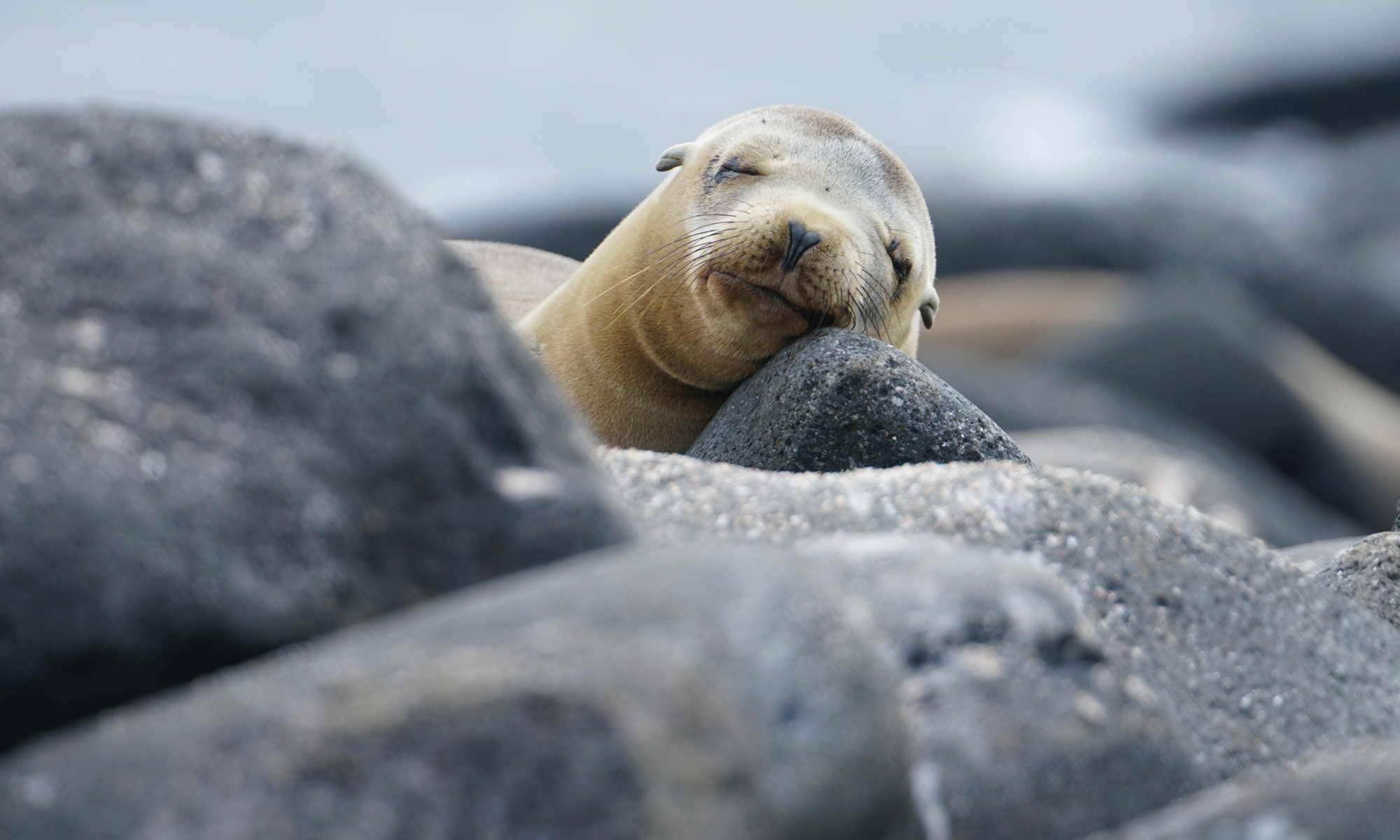- 1300 761 980

So you’ve heard of the Big 5, maybe even the Little 5, and you’ve hopefully heard of the Galapagos Islands. For travellers the world over, bucket list animal sightings are sought out far and wide. Probably a new one to many travellers’ ears, the Galapagos Big 15 showcases some of the most stunning wildlife you will find in this island paradise. We introduce you to the list and a few of the animals that feature on it…
What makes the list?
Boobies (Nazca, Blue and Red Footed)
Birds are a big deal in the Galapagos, and one of the most famous is the booby. The red-footed, blue-footed and Nazca booby are the three different types and they all have unique qualities. Red-footed boobies, only found on Genovesa Island and Punta Pitt, are the smallest and possess incredible flying capabilities. They are also great swimmers, similar to their blue-footed friends. Furthermore, these intriguing birds are well known for their mating dance in which they shuffle side to side, trying to endear their female partner. They also have (unsurprisingly) striking blue feet– the bluer their feet the higher their chances are of finding a mate!
Unlike their colourful cousins, the Nazca booby has grey feet and black and white feathers. Just like its feathers, this bird has a darker streak… When Nazca females lay their eggs, they lay two. As soon as the eggs hatch, one will be pushed from the nest, meaning that only one chick ever survives.
Marine Iguana
Once described by Charles Darwin as “disgusting, clumsy lizards”, marine iguanas are now icons of the Galapagos Islands. Despite looking like miniature dragons that can conquer any territory, marine iguanas are not as fearsome as you may think. Herbivores that are gentle in nature, they live off the algae that grow on rocks. Interestingly, they are also more agile underwater than on land, using there long tail to power them through the water. On your Galapagos adventure, keep an eye out for these reptilian wonders lounging on rocks in the sun– there’s no better place to catch some rays!
Galapagos Giant Tortoise
The namesake of the islands, the Galapagos Giant Tortoise earns its name from the Spanish word “galapago” meaning saddle. These slow-moving, simple living creatures eat a diet of grass, leaves and cactus and enjoy lounging in the sun. Unfortunately, the giant tortoise has faced many threats to its survival over the years. These include hunting them for food, oil and their shell, as well as facing threats from introduced species. Today, many tortoise species are endangered or critically endangered.
Galapagos Fur Seal
These cute creatures are often confused with the larger Galapagos sea lions, but they are actually two completely separate species. With smaller bodies and larger front flippers, fur seals can grow up to 5 feet long. Furthermore, they are usually found on the Isabela and Fernandina islands. Here, they seek protection from the sun by wedging themselves behind boulders and lying amongst the rocks. When not sunbaking (like so many other Galapagos animals!) females can dive for up to 17 hours in search of food.
Waved Albatross
Even if you don’t classify yourself as a bird lover, the Waved albatross is one bird guaranteed to impress! The largest bird in the Galapagos, it has a wingspan that reaches up to two and a half metres. An elegant bird that is white, grey and black in colour, the albatross has a large yellow beak perfect for catching squid and fish on their flights out at sea. Like the blue-footed booby, the Waved albatross also has an elaborate mating dance involving bowing and swaying side to side. If you’re lucky enough, you just might be able to witness the exotic rhythm of the suave albatross…
Finally, whether you’re a wildlife, nature lover, or just looking for an adventure, there’s simply no better place than the Galapagos. These fascinating islands have created a unique biosphere, home to some of the most incredible animals on the planet. If you’re venturing through South America soon, you shouldn’t need any more reasons than the Galapagos Big 15 to visit these islands…
Suite 2, 1st Floor
261-271 Wattletree Rd
Malvern VIC 3144



For tailor-made itineraries or enquiries…